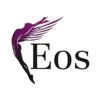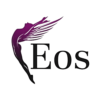Table of Contents
ToggleLet’s explore business culture in the Philippines
To effectively conduct business in the Philippines, it is essential to understand the broader cultural and societal contexts that influence business practices.
Core Filipino values such as “Bayanihan” (community spirit), “Pakikisama” (smooth interpersonal relationships), and “Hiya” (sense of shame or propriety) deeply impact how business is conducted. These values foster a community-centric approach where maintaining harmony and mutual respect is paramount.
Additionally, the role of religion in Filipino society significantly influences business practices and holidays. Catholicism, the predominant religion, shapes the country’s cultural norms and ethical standards.
Understanding regional differences is also crucial, as business practices can vary across the archipelago, reflecting the diverse local cultures. Moreover, the Filipino approach to work-life balance emphasises the importance of family and personal well-being, affecting business interactions and expectations.
Awareness of key legal and compliance issues is vital for foreign businesses in the Philippines. Navigating these regulations requires a thorough understanding of local laws and business etiquette. By appreciating these cultural contexts and integrating them into your business strategy, you can foster stronger relationships and ensure successful business engagements in the Philippines.
Cultural Importance of Personal Connections in the Philippines
In the Philippines, personal relationships are the cornerstone of exploring business culture in the Philippines. This cultural emphasis on relationships can be traced to historical and traditional values. “Bayanihan,” which refers to communal unity and cooperation, plays a significant role in Filipino society. This spirit of collective effort and mutual support is deeply ingrained in the Filipino psyche and manifests in various aspects of life, including business.
Historically, Filipino communities have relied on strong interpersonal relationships for survival and progress. This communal mindset has carried over into modern times, influencing how Filipinos approach business. Trust and loyalty are highly valued, and business dealings often extend beyond mere transactions to include a personal dimension. For employers, understanding and respecting these cultural nuances is crucial for navigating business culture in the Philippines and building successful business relationships.
Strategies for Building Trust
- Regular Check-Ins: Maintaining regular check-ins is one effective strategy for building trust with Filipino employees and business partners. These check-ins can be formal, such as scheduled meetings, or informal, like casual conversations over coffee. Regular interactions show that you are invested in the relationship and value their input.
-
Example Scenario: A foreign manager at a Philippine branch makes it a point to have weekly informal chats with team members, discussing work-related issues, personal interests, and family matters. This practice helps build a stronger bond and fosters a more cohesive team environment.
-
- Sharing Personal Stories: Filipinos appreciate authenticity and warmth in their interactions. Sharing personal stories and experiences can help bridge cultural gaps and build rapport. By opening up about your experiences, you encourage your Filipino counterparts to do the same, creating a deeper connection.
-
Example Scenario: During a business dinner, a foreign executive shares a story about their family traditions during holidays. This gesture prompts Filipino colleagues to share their holiday customs, leading to a richer, more personal conversation that strengthens the relationship.
-
- Genuine Interest in Well-Being: Demonstrating genuine interest in the well-being of your Filipino employees and partners goes a long way in building trust. Simple acts of kindness, such as asking about their family or health, can profoundly impact.
-
Example Scenario: A manager notices an employee looking stressed and takes the time to ask if everything is alright, offering support and flexibility if needed. This act of empathy builds trust and boosts morale and loyalty.
-
Social Activities and Business Networking
Social activities play a crucial role in business networking in the Philippines. Participating in these activities can help you integrate into the local business community and build strong, lasting relationships.
- Attending Fiestas: Fiestas, or local festivals, are vibrant celebrations that occur throughout the Philippines. These events are excellent opportunities for networking in a relaxed and festive environment. By participating in fiestas, you show respect for local traditions and get a chance to interact with community leaders and potential business partners.
-
Example Scenario: A foreign entrepreneur attends the Sinulog Festival in Cebu, joining the celebrations and mingling with local business owners. This participation enhances their cultural understanding and opens doors to new business opportunities.
-
- Engaging in Local Sports Events: Sports are popular in the Philippines, with basketball being a favourite. Attending or sponsoring local sports events can effectively connect with the community and build relationships.
-
Example Scenario: A foreign company sponsors a local basketball tournament, gaining visibility and goodwill in the community. The company’s representatives attend the games, engaging with spectators and players, which helps establish a positive brand image and fosters new business connections.
-
- Karaoke Nights: Karaoke is a beloved activity in the Philippines, often enjoyed during social gatherings. Participating in karaoke sessions can break the ice and create a relaxed atmosphere for business discussions.
-
Example Scenario: After a successful business meeting, a foreign executive joins their Filipino counterparts for a karaoke night. Singing together and sharing laughs helps humanise the business relationship, making future interactions more comfortable and productive.
-
Building strong personal relationships is fundamental to navigating business culture in the Philippines and ultimately achieving business success. Employers can forge meaningful and lasting business relationships by understanding the cultural importance of these connections, implementing strategies to build trust, and participating in local social activities. Embracing these cultural practices enhances business operations and enriches the overall experience of working in the Philippines.
Cultural Roots of Hierarchical Structures in the Philippines
The Philippine hierarchical structure is deeply rooted in its cultural and historical context. Traditional family dynamics, community organisation, and historical governance systems influence it. The Filipino family unit, often extended and multi-generational, typically operates on a hierarchy where elders hold significant authority and respect. This familial hierarchy naturally extends into business and community settings.
Historically, various colonial powers, such as Spain and the United States, have influenced the Philippines, which introduced their own hierarchical systems. The Spanish colonial period, in particular, left a lasting impact, embedding a strong sense of hierarchy and respect for authority in Filipino culture. This historical context has shaped contemporary business practices, where respect for seniority and authority is paramount.
Practical Tips for Addressing Hierarchies
- Recognising Seniority in Meetings: When attending business meetings in the Philippines, it is crucial to recognise and respect the seniority of participants. Senior members are often the decision-makers, and their opinions carry significant weight.
-
Example Scenario: During a board meeting, a junior manager greets the senior executives first and acknowledges their presence before presenting their report. This act of respect helps them gain favour and demonstrates cultural awareness.
-
- Using Appropriate Titles and Honorifics: Titles and honorifics are important in Filipino culture. Addressing individuals by their proper titles (e.g., “Attorney,” “Engineer,” “Doctor”), followed by their surname, shows respect and acknowledges their status and achievements.
-
Example Scenario: A foreign business partner consistently addresses a Filipino executive as “Attorney Santos” during meetings and written communications. This use of proper titles reinforces respect and professionalism.
-
- Understanding Implicit Hierarchies: Sometimes, hierarchies are not explicitly stated but understood through interactions. Observing the dynamics within a group can provide insights into the implicit hierarchy.
-
Example Scenario: In a project team, a foreign consultant observes that certain team members defer to a particular individual for final decisions despite not holding the highest formal title. Recognising this implicit leader, the consultant seeks their input and approval on key decisions.
-
Impact on Decision-Making Processes
Hierarchical structures significantly influence decision-making processes in the Philippines. Decisions are often made at the top levels of the hierarchy, and lower-ranking members may have limited input. Understanding this dynamic is crucial for effective business operations.
- Securing Buy-In from Key Senior Members: To facilitate decision-making, it is essential to secure buy-in from key senior members early in the process. Their approval can expedite decisions and ensure smoother implementation.
-
Example Scenario: A foreign company looking to introduce a new product line first seeks the CEO’s and senior executives’ approval. By presenting a comprehensive proposal that aligns with the company’s strategic goals, they secure the necessary buy-in, streamlining the product launch.
-
- Navigating Bureaucratic Layers: In hierarchical organisations, there may be multiple layers of bureaucracy. Understanding and navigating these layers is crucial for getting things done efficiently.
-
Example Scenario: A foreign investor working with a local government unit recognises the need to go through several departments to obtain permits. The investor successfully navigates the bureaucratic process by building relationships with key officials at each level and understanding the procedural requirements.
-
- Leveraging the Influence of Senior Leaders: Senior leaders often have substantial influence over their teams and can mobilise support for initiatives. Leveraging their influence can be instrumental in achieving business objectives.
-
Example Scenario: A multinational company plans to implement a new technology system across its Philippine offices. They engage the senior leaders in the planning phase, ensuring they understand the benefits and can advocate for the change among their teams. This top-down support facilitates a smoother transition.
-
Understanding and navigating hierarchical structures in the Philippines is essential for business success. By appreciating the cultural and historical roots of these structures, respecting seniority, and strategically engaging with key decision-makers, employers can effectively operate within the Filipino business environment. These practices enhance business operations and foster a respectful and productive workplace culture.
Communication Styles Affecting Business Culture in the Philippines
Non-verbal communication plays a crucial role in Filipino interactions, often conveying more than spoken words. Understanding these non-verbal cues can significantly enhance one’s ability to communicate effectively and build rapport in a business setting.
- Body Language: Filipinos use body language to subtly express emotions and reactions. For instance, a slight nod or a gentle smile can indicate agreement or approval, while a raised eyebrow might suggest curiosity or doubt.
-
Example Scenario: During a meeting, a Filipino employee nods slightly and smiles when a foreign manager proposes a new idea, indicating agreement and enthusiasm. Conversely, if the employee avoids eye contact and looks down, it might suggest discomfort or disagreement.
-
- Facial Expressions: Facial expressions are a key component of non-verbal communication in the Philippines. A genuine smile can build trust and show friendliness, while a frown or a grimace can indicate displeasure or confusion.
-
Example Scenario: In a business negotiation, a Filipino partner’s warm smile and relaxed facial expression signal openness and willingness to collaborate, whereas a furrowed brow might indicate concern or the need for further discussion.
-
- Gestures: Certain gestures have specific meanings in Filipino culture. For example, pointing with the lips, a common gesture, can indicate direction or reference to a person without using one’s finger, which is considered impolite.
-
Example Scenario: A local employee uses a subtle lip-pointing gesture to direct a foreign colleague’s attention to a document on the table. Recognising and understanding this gesture helps avoid misunderstandings.
-
Indirect Communication Techniques
Filipinos often use indirect communication to maintain harmony and avoid confrontation. Recognising and interpreting these techniques is essential for effective business communication.
- Hinting: Instead of direct refusals or criticisms, Filipinos might hint at their true feelings to avoid offending.
-
Example Scenario: When asked about the feasibility of a tight deadline, a Filipino employee might say, “It could be challenging,” instead of directly saying, “No.” This indirect response suggests that the deadline might be unrealistic without outright refusal.
-
- Storytelling: Storytelling is a common way to convey messages indirectly. By sharing anecdotes or parables, Filipinos can express their opinions or provide advice in a non-confrontational manner.
-
Example Scenario: A manager shares a story about a past project that failed due to unrealistic timelines, subtly advising against a similar approach for a current project without directly criticising the proposal.
-
- Using Intermediaries: Filipinos sometimes use intermediaries to communicate sensitive messages. This approach helps to avoid confrontation and maintain harmonious relationships.
-
Example Scenario: If an employee has an issue with a colleague, they might ask a mutual friend or another colleague to convey the message or mediate the discussion, thus preventing potential conflicts and preserving workplace harmony.
-
Conflict Resolution
Resolving conflicts in the Philippines requires a culturally sensitive approach prioritising harmony and face-saving. Understanding these methods can help you effectively manage disputes and maintain positive relationships.
- Emphasising Harmony: In Filipino culture, maintaining harmony is paramount. When addressing conflicts, focus on finding common ground and mutually beneficial solutions.
-
Example Scenario: In a dispute over resource allocation, a manager facilitates a discussion where both parties can express their concerns and collaboratively identify a solution that satisfies everyone’s needs, thus preserving workplace harmony.
-
- Face-Saving Techniques: Allowing individuals to save face or maintain their dignity is crucial in conflict resolution. Avoiding public criticism and addressing issues privately can help achieve this.
-
Example Scenario: A manager addresses an employee’s performance issues in a private meeting, offering constructive feedback and support for improvement rather than reprimanding them in front of their peers. This approach helps the employee save face and feel respected.
-
- Mediation and Facilitation: A neutral mediator or facilitator can help resolve conflicts by ensuring that both parties are heard and understood without bias.
-
Example Scenario: When two employees disagree, a manager acts as a mediator, guiding the conversation and helping both parties articulate their perspectives and find a resolution that respects them.
-
Understanding and adapting to the Filipino communication style is essential for business success in the Philippines. Employers can foster effective communication, build stronger relationships, and maintain a harmonious work environment by recognising the importance of non-verbal cues, employing indirect communication techniques, and resolving conflicts with sensitivity to cultural norms. These practices enhance day-to-day interactions and contribute to long-term business success in the Filipino market.
Business Culture in the Philippines: Punctuality and Time Perception
Cultural Attitudes Towards Time
In the Philippines, cultural attitudes towards time are unique and can differ significantly from those in Western countries. “Filipino Time” refers to a more relaxed and flexible approach to punctuality. This cultural trait is rooted in Filipinos’ traditional, communal lifestyle, where personal interactions and relationships often take precedence over rigid schedules.
“Filipino Time” is characterised by a tendency to be less strict about punctuality. This flexibility is not seen as a sign of disrespect but rather as an indication of the importance placed on relationships and social interactions. While this approach can be advantageous in fostering a relaxed and amicable environment, it can pose challenges in a business context where timeliness is often critical.
Balancing Flexibility with Reliability
For international businesses operating in the Philippines, striking a balance between flexibility and reliability is essential. Here are some strategies to achieve this balance:
- Setting Clear Expectations: Communicate your expectations regarding punctuality and deadlines from the outset. This can help align your team and business partners with your standards while respecting cultural norms.
-
Example Scenario: At the start of a project, a foreign manager outlines specific timelines and milestones in a detailed project plan. By clearly defining expectations, team members understand the importance of adhering to the schedule, even within a flexible framework.
-
- Utilising Follow-Up Reminders: Regular follow-up reminders can help ensure deadlines are met without appearing overly rigid.
Gentle reminders through emails, calls, or meetings can keep everyone on track.-
Example Scenario: A project manager sends weekly email reminders highlighting upcoming deadlines and progress updates. These reminders keep the team focused and aware of their responsibilities while allowing for some flexibility in day-to-day activities.
-
- Building Buffer Time: Incorporate buffer time into your schedules to accommodate any delays due to “Filipino Time.” This approach allows for flexibility without compromising the overall timeline.
-
Example Scenario: When planning a project launch, a company adds an additional two weeks to the timeline to account for any unexpected delays. This buffer ensures the project stays on track and reduces stress for all involved.
-
- Adopting a Flexible Mindset: Embrace the local culture by adopting a flexible mindset. While punctuality is important, occasional delays are a part of the cultural fabric. Approach these situations with patience and adaptability.
-
Example Scenario: During a business trip, a foreign executive plans meetings with extra time in between to accommodate potential delays. This flexibility allows them to adjust their schedule without feeling rushed or frustrated.
-
Understanding and adapting to the cultural attitudes towards time in the Philippines is essential for business success. By balancing flexibility with reliability, international businesses can respect local norms while ensuring operational efficiency.
Employing strategies such as setting clear expectations, using follow-up reminders, building buffer time, and adopting a flexible mindset can help navigate the nuances of “Filipino Time” and business culture in the Philippines. These practices, coupled with real-world examples, demonstrate that businesses can thrive in the Philippine market with cultural sensitivity and strategic planning.
Business Culture in the Philippines’ Gift-Giving Practice
In Filipino culture, giving gifts is more than just a formality; it is a gesture that conveys respect, gratitude, and personal connection. This practice is deeply embedded in social and business interactions and reflects the value placed on personal relationships. Gifts are often exchanged during significant meetings, holidays, and special occasions, serving as tangible tokens of goodwill.
Principles of Thoughtful Gift-Giving
- Modesty and Thoughtfulness: When selecting a gift, it is essential to choose something modest yet thoughtful. Overly expensive gifts can be misconstrued as attempts at bribery and may cause discomfort. The key is to find a balance between showing appreciation and maintaining cultural sensitivity.
-
Example Scenario: A foreign executive visiting a Filipino partner brings a beautifully crafted, locally made notebook. This gift is modest but shows thoughtfulness and respect for local craftsmanship, making it an appropriate and appreciated gesture.
-
- Appropriate Presentation: The manner in which a gift is presented is as important as the gift itself. In the Philippines, it is customary to present gifts with both hands as a sign of respect and sincerity. Additionally, gifts are typically not opened immediately upon receipt to avoid appearing greedy or ungrateful.
-
Example Scenario: During a business luncheon, a foreign manager presents a small gift to their Filipino counterpart with both hands, accompanied by a warm expression of thanks. The recipient graciously accepts the gift, setting it aside to open later in private.
-
- Cultural Relevance: Choosing a gift that reflects the recipient’s interests or cultural significance can enhance its value and meaning. Understanding the preferences and cultural symbols of your Filipino counterparts can help in selecting an appropriate gift.
-
Example Scenario: Knowing that their Filipino partner enjoys local delicacies, a foreign businessperson brings a box of premium chocolates from their home country, symbolising a blend of cultures and mutual respect.
-
Practical Tips for Gift-Giving
- Timing and Occasion: Gifts can be given during initial meetings to establish goodwill, during holidays such as Christmas or local festivals, or to commemorate special events like promotions or anniversaries. Understanding the appropriate timing enhances the gesture’s impact.
-
Example Scenario: A foreign company sends a festive gift basket to their Filipino partners during Christmas, filled with traditional holiday treats. This gesture acknowledges the local customs and celebrates the festive season together.
-
- Avoiding Missteps: Be mindful of cultural taboos and preferences. Avoid gifts that are overly personal or culturally insensitive. For instance, avoid giving items associated with superstition or negativity.
-
Example Scenario: Instead of gifting sharp objects like knives, which can symbolise severing relationships, a foreign businessperson opts for a beautifully framed piece of local artwork, which is more culturally appropriate and appreciated.
-
- Personal Touch: Adding a personal touch, such as a handwritten note expressing your appreciation, can make the gift more meaningful. This effort shows that you have put thought and care into the gesture.
-
Example Scenario: Along with a modest gift, a foreign executive includes a handwritten card thanking their Filipino counterpart for their hospitality and partnership. This personal touch enhances the sentiment behind the gift.
-
Gift-giving is a cherished tradition in business culture in the Philippines that can significantly strengthen relationships and build goodwill. By practicing thoughtful gift-giving, respecting cultural norms, and choosing modest yet meaningful gifts, international businesspeople can navigate this cultural practice with grace and effectiveness. This approach enhances personal connections and lays the foundation for long-term, successful business relationships in the Philippines.
How Meetings Are Done Within The Business Culture in the Philippines
Preparation and Setting a Clear Agenda
Preparation is a cornerstone of successful business meetings in the Philippines. Given the cultural emphasis on respect and formality, arriving well-prepared demonstrates professionalism and consideration for your Filipino counterparts. A clear, structured agenda ensures that all relevant topics are covered efficiently, keeping the meeting focused and productive.
- Detailed Agenda: Craft a detailed agenda outlining each item’s key discussion points, objectives, and time allocations. Share this agenda with participants ahead of time so they can prepare their contributions and questions.
-
Example Scenario: Before a project kickoff meeting, a project manager sends an agenda including project goals, timelines, roles, and responsibilities. This preparation enables all team members to come prepared with relevant information and questions.
-
- Objective Setting: Clearly define the meeting objectives to align everyone’s expectations. This clarity helps steer the meeting towards productive outcomes and ensures that all participants are on the same page.
-
Example Scenario: A CEO specifies the objectives of a quarterly review meeting: to review financial performance, discuss challenges, and plan for the next quarter. This focus helps participants prepare relevant reports and insights.
-
- Supporting Materials: Provide any necessary documents, reports, or presentations in advance. This allows participants to review the materials beforehand, leading to more informed discussions and efficient decision-making.
-
Example Scenario: An international company shares a market analysis report with local partners before a strategic planning meeting. The participants can review the data and come ready to discuss insights and strategies.
-
Meeting Etiquette
Seating Arrangements, Greeting Protocols, and Appropriate Dress Codes
Understanding and adhering to meeting etiquette can significantly enhance the effectiveness of your interactions and foster a respectful business environment and successfully navigate business culture in the Philippines.
- Seating Arrangements: Seating arrangements in the Philippines often reflect the hierarchical nature of Filipino society. Senior members typically sit at the head of the table or in prominent positions. It is crucial to ensure that seating arrangements respect this hierarchy.
-
Example Scenario: During a high-level meeting, the senior executives from both companies are seated at the head of the table, with other participants arranged according to their ranks. This setup demonstrates respect for the hierarchical structure.
-
- Greeting Protocols: Greetings are formal and respectful. Begin with a polite handshake and, if appropriate, a slight bow. It is customary to address individuals by their titles and surnames unless invited to use first names.
-
Example Scenario: At the start of a business meeting, a foreign manager greets the Filipino executives with a firm handshake and addresses them as “Mr. Santos” and “Ms. Reyes,” acknowledging their titles and showing respect.
-
- Appropriate Dress Codes: Business attire in the Philippines is generally conservative and formal. Men typically wear suits or barong tagalog (a traditional Filipino shirt), while women wear business suits or dresses.
-
Example Scenario: A foreign executive wears a dark suit and tie for a corporate meeting, while a female colleague opts for a professional dress. Their attire aligns with the formal dress code, reflecting professionalism and respect for local norms.
-
Follow-Up Practices
The Importance of Follow-Up Practices
Follow-up practices are essential in the Philippines to ensure that decisions made during meetings are implemented and to maintain ongoing communication and respect.
- Sending Minutes: Distribute detailed minutes of the meeting soon after it concludes. Minutes should include key discussion points, decisions made, and action items with assigned responsibilities and deadlines.
-
Example Scenario: After a strategic planning meeting, the project coordinator sends out the minutes within 24 hours, listing all action points, assigned tasks, and due dates. This helps keep everyone accountable and ensures clarity on the next steps.
-
- Action Points: Highlight specific action points and ensure each task is assigned to a responsible individual. Follow up on these action points in subsequent meetings to track progress.
-
Example Scenario: In the meeting minutes, the project manager clearly outlines who is responsible for each action item, such as market research, budget planning, and timeline creation. Regular follow-ups help ensure that these tasks are completed on time.
-
- Thank-You Notes: Sending a thank-you note or email after the meeting is a courteous gesture that reinforces goodwill and appreciation. It acknowledges the time and effort of the participants and keeps the lines of communication open.
-
Example Scenario: Following a successful business negotiation, a foreign executive sends personalised thank-you emails to all Filipino participants, expressing gratitude for their insights and collaboration. This gesture strengthens the relationship and sets a positive tone for future interactions.
-
Business meetings in the Philippines require careful preparation, adherence to etiquette, and diligent follow-up practices. International businesspeople can navigate these meetings successfully by setting a clear agenda, respecting hierarchical and cultural norms, and maintaining effective communication through follow-up. These practices demonstrate professionalism and foster respect and collaboration, paving the way for fruitful and enduring business relationships in the Philippines.
Conclusion to Business Culture in the Philippines
Business meetings in the Philippines require careful preparation, etiquette adherence, and diligent follow-up practices. International businesspeople can navigate these meetings successfully by setting a clear agenda, respecting hierarchical and cultural norms, and maintaining effective communication through follow-up. These practices demonstrate professionalism and foster respect and collaboration, paving the way for fruitful and enduring business relationships in the Philippines.
For more insights on successfully navigating business culture in the Philippines, consider partnering with local experts or consultants who can provide tailored advice and support. Understanding and integrating into the local culture can enhance your business operations and build strong, lasting relationships in this vibrant market. Contact Eos Global Expansion today. Check our services here or book a free consultation now.
References
Further reading: Expanding into Philippines? Let us help!
Photo by REY MELVIN CARAAN on Unsplash






